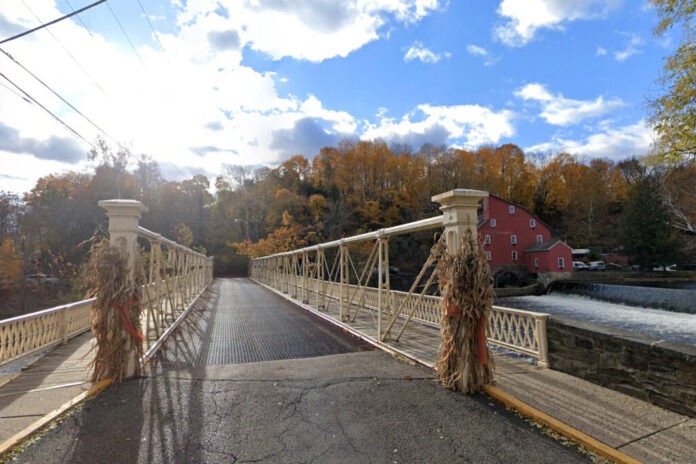New Jersey’s roads and rivers are lined with bridges that are more than just practical crossings — they are enduring monuments to the state’s history, craftsmanship, and engineering ingenuity. Many of these structures, built during the 18th and 19th centuries, have survived centuries of use, offering residents and travelers a tangible connection to the past. For history enthusiasts, road-trippers, and architecture fans, exploring these bridges provides a unique way to experience New Jersey’s cultural and industrial heritage.
When identifying the state’s oldest bridges, we focused on structures that remain publicly accessible, structurally sound, and either still carry traffic or serve as pedestrian crossings. While numerous historic remnants exist — from buried foundations to private properties — the bridges highlighted here combine historical significance with the ability to be explored and appreciated firsthand. A convenient Google Map has been created to guide visitors to each location, making it easier to trace New Jersey’s earliest infrastructure and plan a road trip centered on history.
At number ten, Green Sergeant’s Covered Bridge in Delaware Township, Hunterdon County, stands as the state’s oldest covered bridge, completed in 1872. Built with a queen-post timber truss by Charles Holcombe, it was briefly dismantled in 1960 before public outcry prompted its restoration using the original timbers. The bridge’s storied past includes tales of Revolutionary War-era hauntings, yet its charm and historical value are undeniable, earning it a spot on the National Register of Historic Places in 1974.

Ninth on the list is Clinton’s Main Street Bridge, constructed in 1870 with cast and wrought iron trusses. Located adjacent to the Red Mill Museum and the Hunterdon Art Museum, this bridge was widened in 1985 while preserving its original trusses as decorative railings. Today, it remains a pedestrian-friendly landmark and a favorite photo opportunity for locals and visitors alike.
The New Hampton Truss Bridge, built in 1868, holds the distinction of being New Jersey’s oldest surviving iron truss bridge. Spanning the Musconetcong River between Lebanon and Washington Township, Hunterdon County, it was designed to carry wagons and early automobiles. Though closed to vehicular traffic since the 1970s, it continues to serve pedestrians, showcasing elegant Pratt pony truss construction and decorative iron caps.
In Morris County, the Boonton Stone Arch Bridge dates to 1866 and is nestled in Grace Lord Park. This single-span fieldstone arch once supported vital waterworks for the Boonton Ironworks. Today, it offers a scenic pedestrian crossing with views of the Rockaway River gorge and the region’s industrial history.
The Warrington Stone Bridge in Knowlton Township, Warren County, built around 1860, is New Jersey’s largest surviving 19th-century stone-arch roadway bridge. Its six gracefully curved arches carry Brugler Road over the Paulins Kill and remain in use today, celebrated for both functionality and historic craftsmanship.

Other notable structures include Somerset County’s Cat Tail Brook Bridge (1825), Bridgepoint Bridge (1822), and Stone Arch Bridge (1822), all of which continue to serve traffic or pedestrians while preserving historic design elements. The Kingston Bridge (1798) spans multiple counties and replaced a wooden Revolutionary War-era span, reflecting New Jersey’s enduring role in early American infrastructure. At the very top of the list, the Stony Brook Bridge in Princeton, built in 1792, remains the oldest bridge still in use on a state highway. Its triple-arch stone design has been carefully maintained through modern restoration efforts while continuing to support contemporary traffic.
These bridges tell stories of New Jersey’s growth, from early industrial innovation to the evolution of transportation networks, and remain a testament to skilled engineering and architectural vision. They provide not only practical crossings but also cultural landmarks that connect the present with centuries of local history. Visiting these structures offers an immersive way to explore New Jersey’s past while enjoying the scenic beauty that surrounds these historic sites.
For those interested in discovering more about New Jersey’s art, culture, and historic landmarks, visit Explore New Jersey Art & Culture to explore guides, updates, and features on the state’s vibrant cultural landscape.
Exploring these historic bridges offers a rare opportunity to walk, drive, and reflect on the ingenuity and endurance of early American infrastructure while experiencing the Garden State’s rich architectural heritage firsthand.











